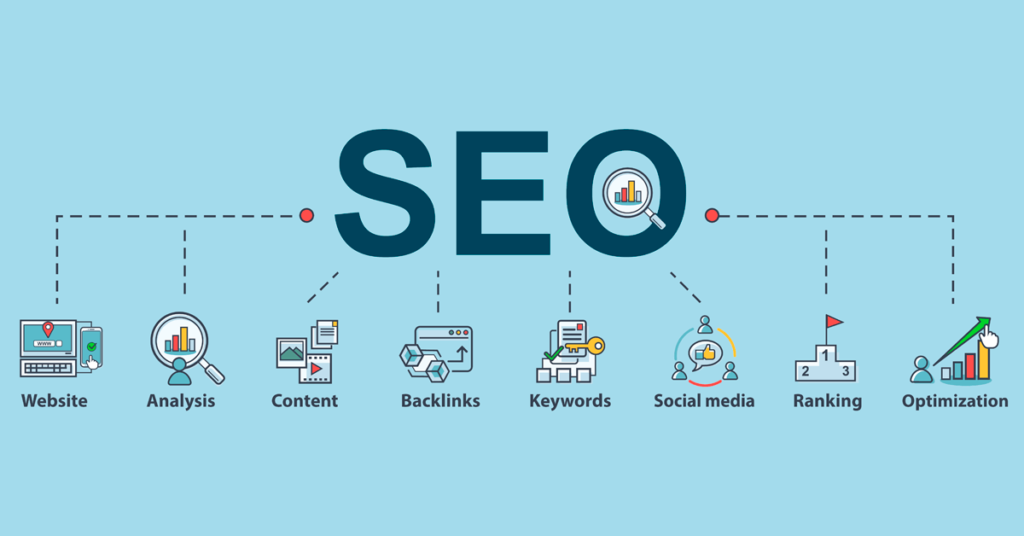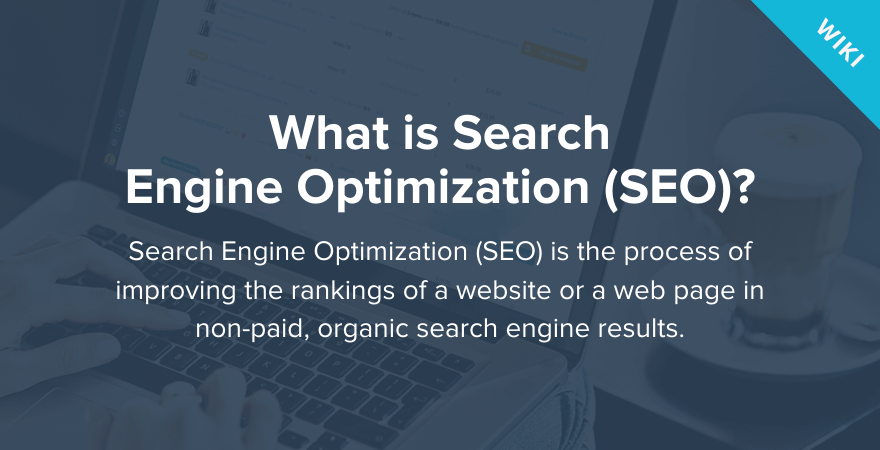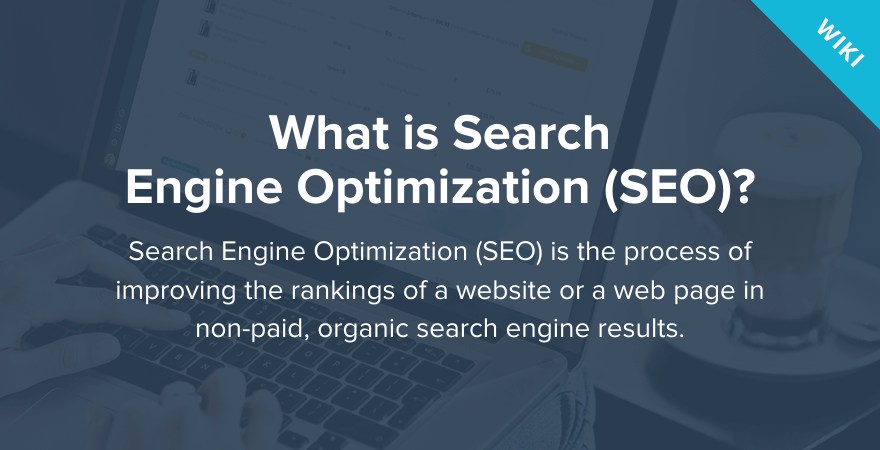Have you ever wondered how search engines decide which websites to show at the top of their search results? This is where Search Engine Optimization (SEO) comes into play. SEO is the practice of optimizing websites so that they appear higher and more frequently in search engine results. It involves various techniques, such as improving website content, using relevant keywords, and building quality backlinks. By understanding SEO, you can enhance your website’s visibility and drive more organic traffic to your online presence.

This image is property of cdn.ttgtmedia.com.
Definition
Search Engine Optimization (SEO) is the process of optimizing a website to improve its visibility and rankings on search engine results pages (SERPs). It involves various techniques and strategies that aim to increase the organic (non-paid) traffic to a website by making it more search engine-friendly.
Importance
In today’s digital age, having a strong online presence is crucial for businesses and individuals alike. With millions of websites competing for attention on search engines, it is essential to implement SEO techniques to stand out from the crowd. Here are some key reasons why SEO is important:
-
Increased visibility: By optimizing your website, you can make it more visible to search engine users. Higher visibility means more potential visitors and customers.
-
Improved website traffic: SEO helps drive organic traffic to your website, which means attracting visitors who are actively searching for products, services, or information related to your business.
-
Higher search engine rankings: When your website appears on the first page of search engine results, it gains credibility and trust from users. Higher rankings can lead to increased click-through rates and more conversions.
-
Competitive advantage: SEO allows you to compete with larger, more established brands by targeting specific keywords and demographics. It levels the playing field and gives smaller businesses a chance to gain visibility and recognition.
-
Enhanced user experience: SEO involves improving various aspects of your website, such as page loading speed, mobile-friendliness, and user-friendly navigation. These improvements not only benefit search engines but also provide a better experience for your website visitors.

This image is property of static.wingify.com.
Benefits
Implementing SEO strategies can offer numerous benefits for businesses and website owners. Let’s explore some of the key benefits of SEO:
-
Cost-effective marketing strategy: Compared to traditional forms of advertising, such as print or TV ads, SEO is a cost-effective way to promote your website and attract organic traffic. It allows you to target specific keywords and demographics without breaking the bank.
-
Long-term results: Unlike paid advertising, the effects of SEO are long-lasting. By consistently implementing SEO techniques, you can maintain and improve your rankings over time, leading to sustained organic traffic and visibility.
-
Brand credibility: When your website appears on the first page of search engine results, it creates a sense of trust and credibility among users. People tend to trust websites that rank highly, making SEO an essential tool for building brand authority.
-
Targeted audience: SEO allows you to target specific keywords and demographics, ensuring that your website is visible to the right audience. By reaching the people who are actively searching for your products or services, you have a higher chance of generating quality leads and conversions.
-
Measurable results: SEO provides valuable data and insights through tools like Google Analytics. You can track your website’s performance, monitor keyword rankings, and measure the success of your SEO efforts. This data helps you make informed decisions and adjust your strategies accordingly.
Types
There are different approaches to implementing SEO, each with its own methods and techniques. Here are the main types of SEO:
-
White Hat SEO: This refers to SEO practices that follow search engine guidelines and focus on creating high-quality, relevant content. White hat methods include keyword optimization, quality link building, and user-friendly website design.
-
Black Hat SEO: In contrast to white hat SEO, black hat SEO involves using unethical or manipulative techniques to boost rankings. These practices violate search engine guidelines and can lead to penalties or even website bans. Examples of black hat SEO include keyword stuffing, link spamming, and hidden text.
-
Gray Hat SEO: Gray hat SEO falls somewhere in between white hat and black hat. It involves tactics that may not be explicitly prohibited by search engines but still carry some degree of risk. Some gray hat techniques include paid link building, article spinning, and doorway pages.
It is important to note that while black hat SEO may offer short-term gains, it can seriously harm your website’s reputation and rankings in the long run. It is always best to focus on white hat SEO techniques for sustainable and ethical results.

This image is property of www.digitalspotacademy.com.
Keywords in SEO
Keywords play a critical role in SEO as they help search engines understand the relevance of your content to users’ search queries. Here are the key aspects of keywords in SEO:
-
Keyword research: This involves identifying the specific words and phrases used by your target audience when searching for information related to your website. By conducting thorough keyword research, you can determine which keywords to target in your content.
-
Importance of keywords: Keywords act as a bridge between your website and search engine users. By strategically incorporating relevant keywords into your content, meta tags, and other elements, you can signal to search engines that your website is a valuable resource for those particular queries.
-
Keyword optimization techniques: Effective keyword optimization involves using keywords naturally and strategically within your content. This includes placing keywords in title tags, headings, meta descriptions, and throughout the body of your content. However, it is essential to avoid overusing keywords (known as keyword stuffing), as this can have negative consequences for your rankings.
Remember that the goal is to provide valuable and relevant content to users, so focus on creating high-quality content that incorporates keywords naturally rather than forcefully.
On-Page SEO
On-page SEO refers to the optimization efforts made on individual web pages to improve their visibility and rankings. Here are some key aspects of on-page SEO:
-
Title tags: The title tag is an HTML element that defines the title of your web page. It is displayed in search engine results as the clickable headline. Optimizing title tags with relevant keywords can improve your page’s visibility and click-through rate.
-
Meta descriptions: Meta descriptions provide a brief summary of a web page’s content. While they don’t directly impact rankings, well-written meta descriptions can entice users to click on your search listing, thereby increasing organic traffic.
-
URL structure: A clean and keyword-rich URL structure can improve the visibility and readability of your web pages. Including relevant keywords in the URL helps search engines understand the content of the page.
-
Header tags: Header tags (H1, H2, H3, etc.) are HTML elements that define headings and subheadings within your content. Optimizing header tags with relevant keywords can improve readability and signal the importance of specific sections to search engines.
-
Keyword optimization in content: Incorporating relevant keywords naturally into your content helps search engines understand the context and relevance of your web pages. However, it is important to prioritize the user experience and avoid keyword stuffing.
-
Internal and external linking: Including internal links within your content helps search engines navigate and understand the structure of your website. External links to reputable sources can also enhance the credibility of your content.
-
Image optimization: Optimizing images with descriptive alt tags and file names can help them appear in image search results, driving additional organic traffic to your website. Compressing images and using the appropriate file formats can also improve page loading speed.
By implementing these on-page SEO techniques, you can enhance the visibility and relevance of your web pages, attracting more organic traffic from search engines.

This image is property of www.oberlo.com.
Content Optimization
Content optimization involves creating and improving the content on your website to make it more relevant and valuable to users and search engines. Here are some key aspects of content optimization:
-
High-quality content: Creating high-quality, informative, and engaging content is the foundation of any successful SEO strategy. Content should be well-researched, original, and provide unique insights or solutions to users’ queries.
-
Keyword density: Keyword density refers to the percentage of keywords in relation to the total number of words on a webpage. While keyword density isn’t as important as it once was, it is still essential to include relevant keywords naturally throughout your content.
-
Content length: In general, longer content tends to perform better in search engine results. However, the focus should always be on providing value to users rather than meeting a specific word count. Aim for comprehensive and in-depth content that thoroughly covers the topic.
-
Use of headings: Organizing your content with clear headings and subheadings (using header tags) improves readability and helps search engines understand the structure of your content. Headings also provide an opportunity to include relevant keywords.
-
Engaging and relevant content: Keeping your content engaging and relevant is crucial for user satisfaction and search engine rankings. Use storytelling, visuals, and interactive elements to make your content more captivating and shareable.
-
Content updates: Regularly updating your content with fresh information and insights signals to search engines that your website is actively maintained and provides up-to-date information. Updating old content can also help it rank higher in search results.
By optimizing your content, you can provide value to users, improve rankings, and attract more organic traffic to your website.
Technical SEO
Technical SEO focuses on optimizing the technical aspects of your website to ensure that search engines can crawl and index your content efficiently. Here are some key aspects of technical SEO:
-
XML sitemap: An XML sitemap is a file that lists all the pages on your website, helping search engines discover and index your content more effectively. Submitting your sitemap to search engines can ensure that your website is crawled and indexed properly.
-
Robots.txt files: The robots.txt file is a text file that tells search engine crawlers which pages or sections of your website should be allowed or disallowed from being crawled. Properly configuring your robots.txt file ensures that search engines can access the right pages.
-
Page loading speed: Page loading speed is an important factor in both user experience and search engine rankings. Optimizing your website’s performance by optimizing images, minifying code, and leveraging caching techniques can significantly improve loading times.
-
Mobile-friendliness: With the increasing use of mobile devices, having a mobile-friendly website is crucial. Search engines prioritize mobile-friendly websites in their rankings to provide a better user experience for mobile users.
-
Website’s security: Ensuring that your website is secure and protected against cyber threats is not only essential for user trust but also for search engine rankings. Implementing SSL certificates and using HTTPs encryption can help protect sensitive information and boost your website’s credibility.
-
Structured data markup: Structured data markup provides additional context and information to search engines about your content, such as reviews, ratings, prices, and events. This markup helps search engines display rich snippets in search results, enhancing the visibility of your web pages.
By addressing these technical aspects of your website, you can ensure that search engines can crawl, index, and display your content accurately, leading to improved visibility and rankings.

This image is property of alreadysetup.com.
Off-Page SEO
Off-page SEO refers to optimization techniques that are implemented outside of your website to improve its visibility and authority. Here are some key aspects of off-page SEO:
-
Backlinks: Backlinks are links from other websites that point back to your website. They are an important ranking factor, as search engines consider them as votes of confidence and credibility. High-quality backlinks from reputable websites can significantly boost your website’s rankings.
-
Anchor text optimization: The anchor text is the clickable text in a hyperlink. Optimizing anchor texts with relevant keywords can help search engines understand the context and relevance of the linked content.
-
Guest posting: Guest posting involves writing and publishing articles on other websites within your niche. It allows you to showcase your expertise, gain exposure to new audiences, and earn valuable backlinks to your website.
-
Outreach campaigns: Outreach campaigns involve reaching out to influencers, bloggers, and journalists to promote your content or gain mentions and backlinks. Building relationships and partnerships within your industry can lead to valuable off-page SEO opportunities.
-
Internal linking: Internal linking involves linking to other pages within your own website. It helps search engines discover and navigate your content, distribute link equity, and improve the user experience by providing additional relevant information.
By implementing off-page SEO strategies, you can increase your website’s visibility, authority, and trustworthiness in the eyes of search engines.
Link Building
Link building is a key aspect of off-page SEO and refers to the process of acquiring high-quality backlinks from other websites. Here are some key aspects of link building:
-
Backlinks: As mentioned earlier, backlinks play a crucial role in search engine rankings. The more high-quality and relevant backlinks your website has, the better it is likely to rank. It is important to focus on earning natural, organic backlinks from reputable and authoritative websites.
-
Anchor text optimization: When other websites link to your site, the anchor text they choose can impact how search engines perceive the relevance of your content. Optimizing anchor texts with relevant keywords can boost the visibility and rankings of your web pages.
-
Guest posting: Guest posting on other reputable websites allows you to showcase your expertise, gain exposure to new audiences, and earn backlinks. By providing valuable and informative content, you can attract quality backlinks to your website.
-
Outreach campaigns: Outreach campaigns involve reaching out to industry influencers, bloggers, and journalists to promote your content or gain mentions and backlinks. Building relationships and partnerships through outreach can lead to valuable backlinks and exposure for your website.
-
Internal linking: Internal linking within your own website not only improves the user experience but also helps distribute link equity and signals to search engines which pages are important. Strategic internal linking can strengthen the overall link profile of your website.
Link building requires a combination of patience, creativity, and quality content. By focusing on building natural and high-quality backlinks, you can improve your website’s authority and rankings in search engine results.
In conclusion, search engine optimization (SEO) is a comprehensive strategy that involves various techniques and practices to improve a website’s visibility and rankings on search engine results pages. By understanding the importance, benefits, types, and various elements of SEO, you can effectively optimize your website and attract organic traffic from search engines. Remember to prioritize the user experience and provide valuable, relevant content to users, as this is a fundamental aspect of SEO success.


